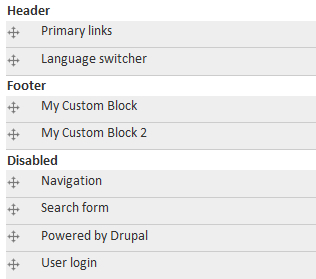We often define custom blocks in a site-specific module. Sometimes the markup in these blocks can start building up and we realize that it's time to create a template for the block. This is a good way to keep markup out of the module code. It's also a good way to practise writing cleaner and more themer-friendly modules.
To add a template file to your module, you'll need to implement the hook_theme() function.
/* * Implementation of hook_theme(). */ function mymodule_theme() { return array( 'mymodule_custom_block' => array('arguments' => array(), 'template' => 'mymodule-custom-block') ); }
The name of the template will be mymodule-custom-block.tpl.php. You should create this template in the mymodule directory. In order to make the contents of the template appear on the site, you'll need to add it to a custom block. Below, I've implemented the hook_block function and assigned theme('mymodule_custom_block') to the content of my custom block.
/* * Implementation of hook_block(). */ function mymodule_block($op = 'list', $delta = 0, $edit = array()) { switch ($op) { case 'list': return array( 0 => array( 'info' => t('Custom Block'), ), ); case 'view': $subject = ''; $content = ''; switch ($delta) { case 0: $content = theme('mymodule_custom_block'); $subject = t('My Custom Block'); break; } if ($subject || $content) { return array( 'subject' => $subject, 'content' => $content, ); } break; } }
In this case, the template file itself will contain static HTML. You can also add arguments to the mymodule_custom_block function if your block is dynamic.
